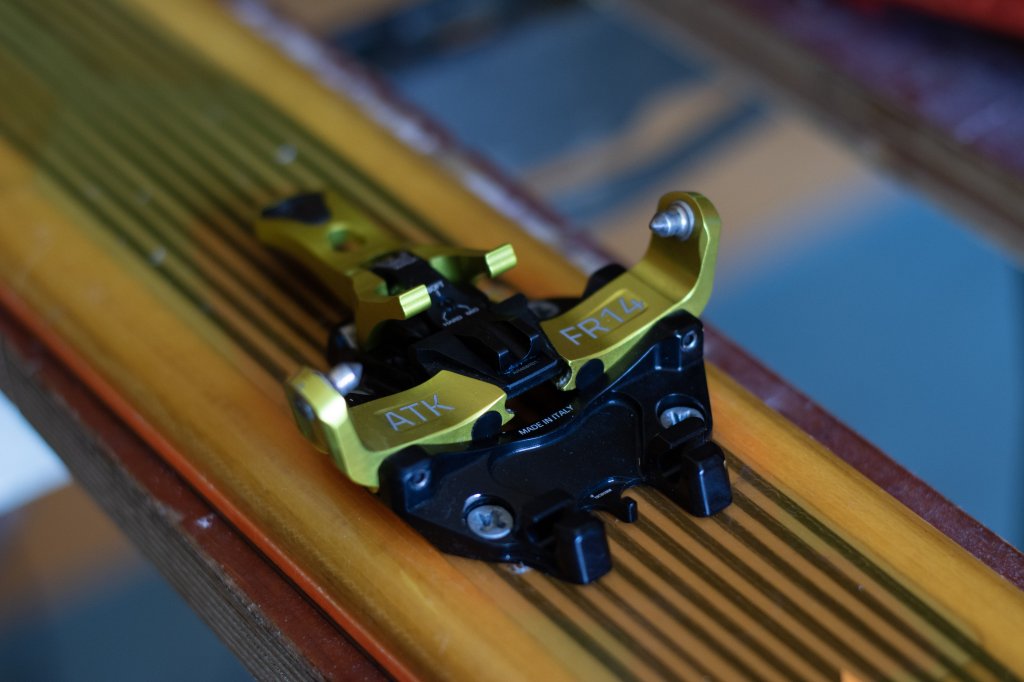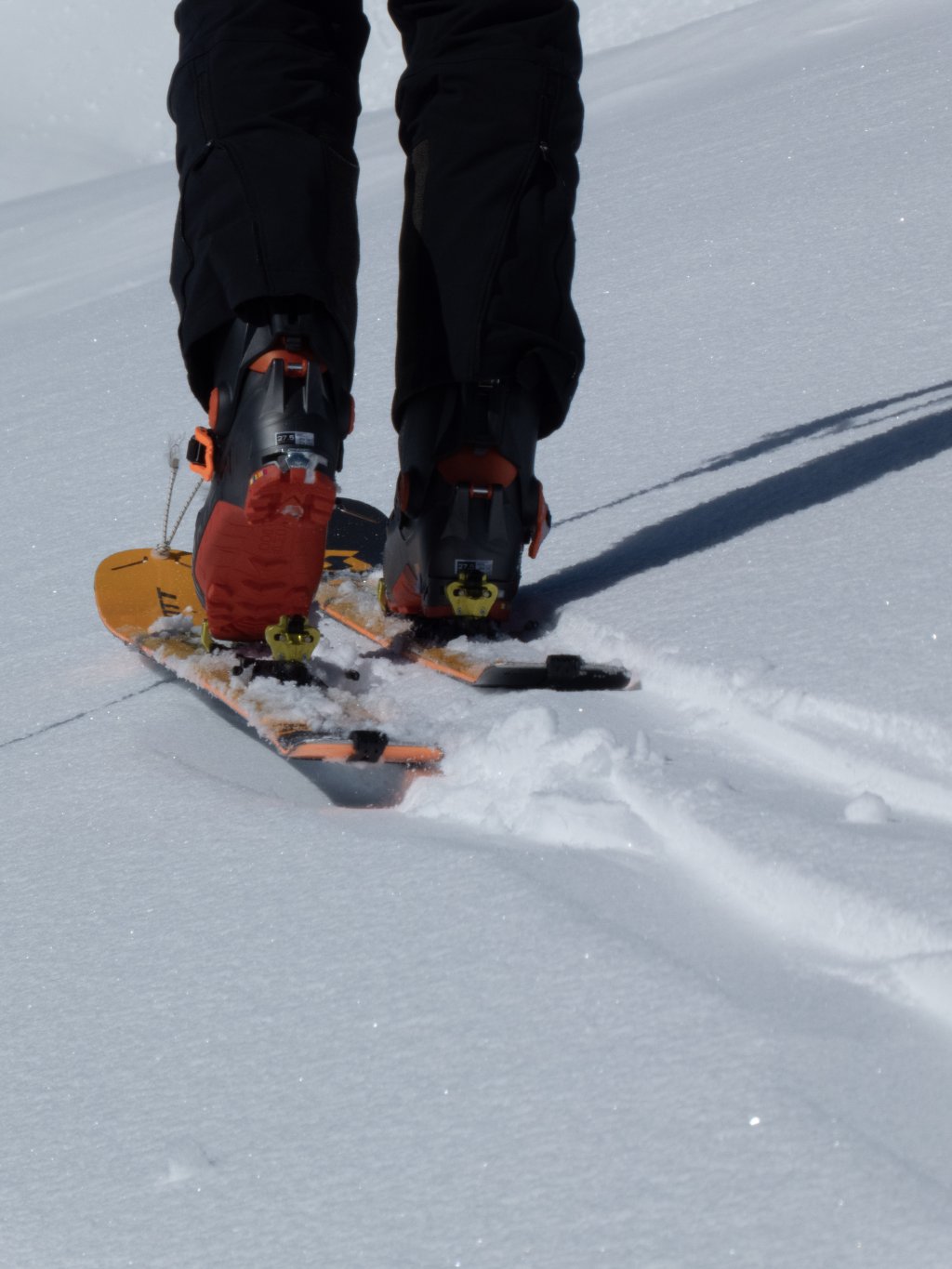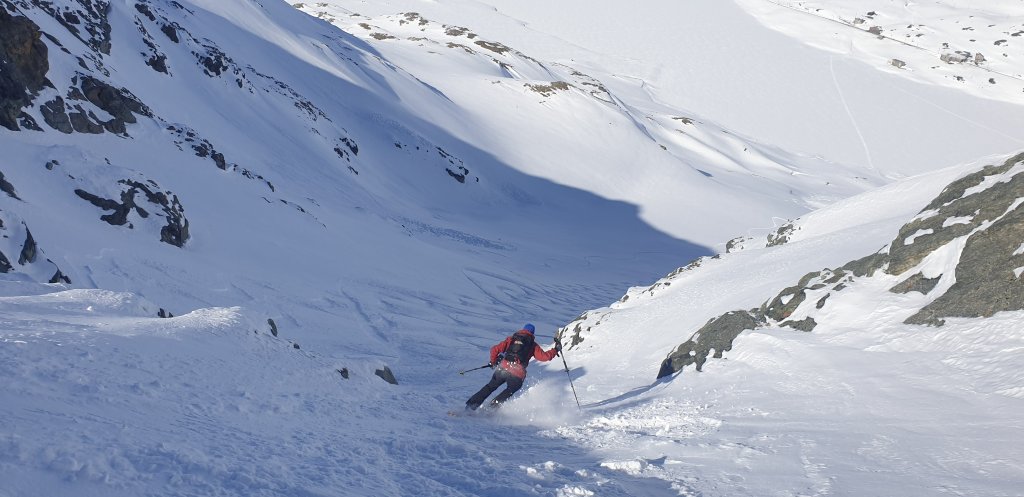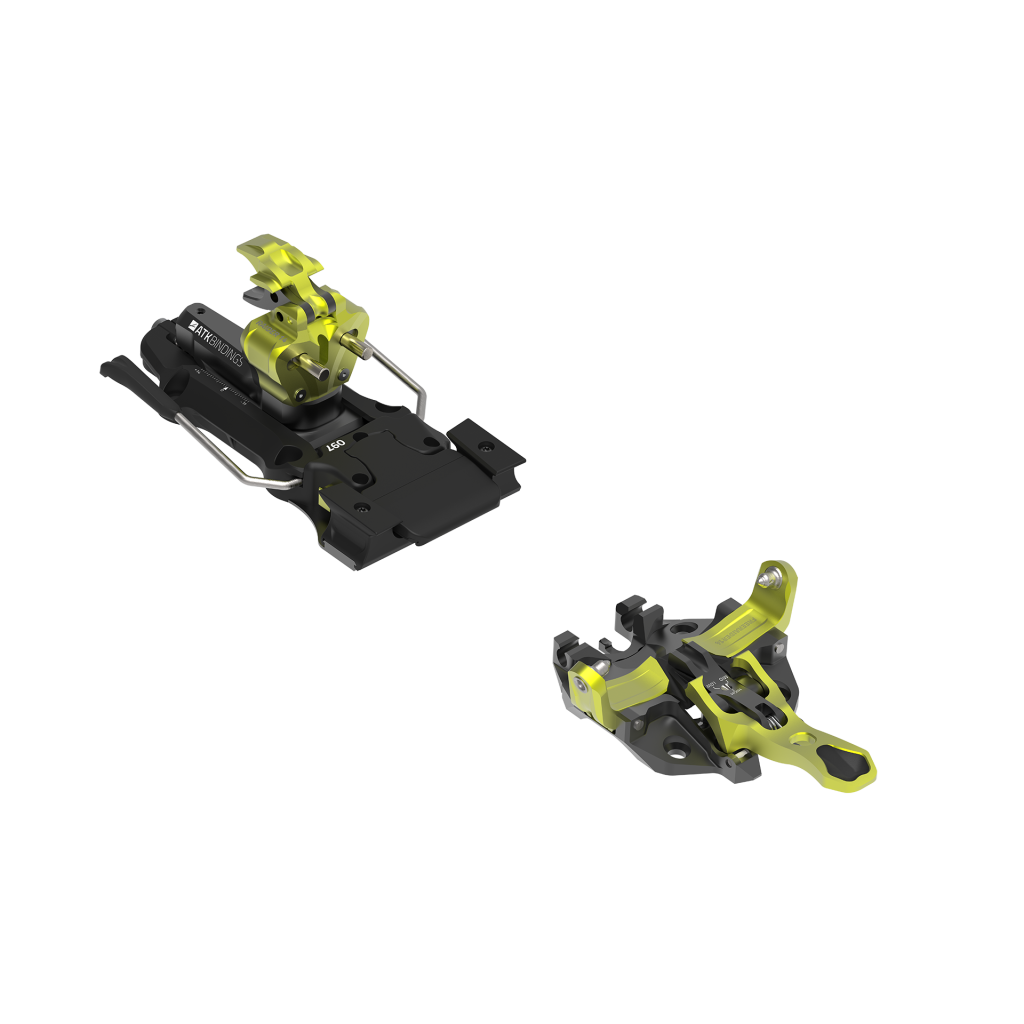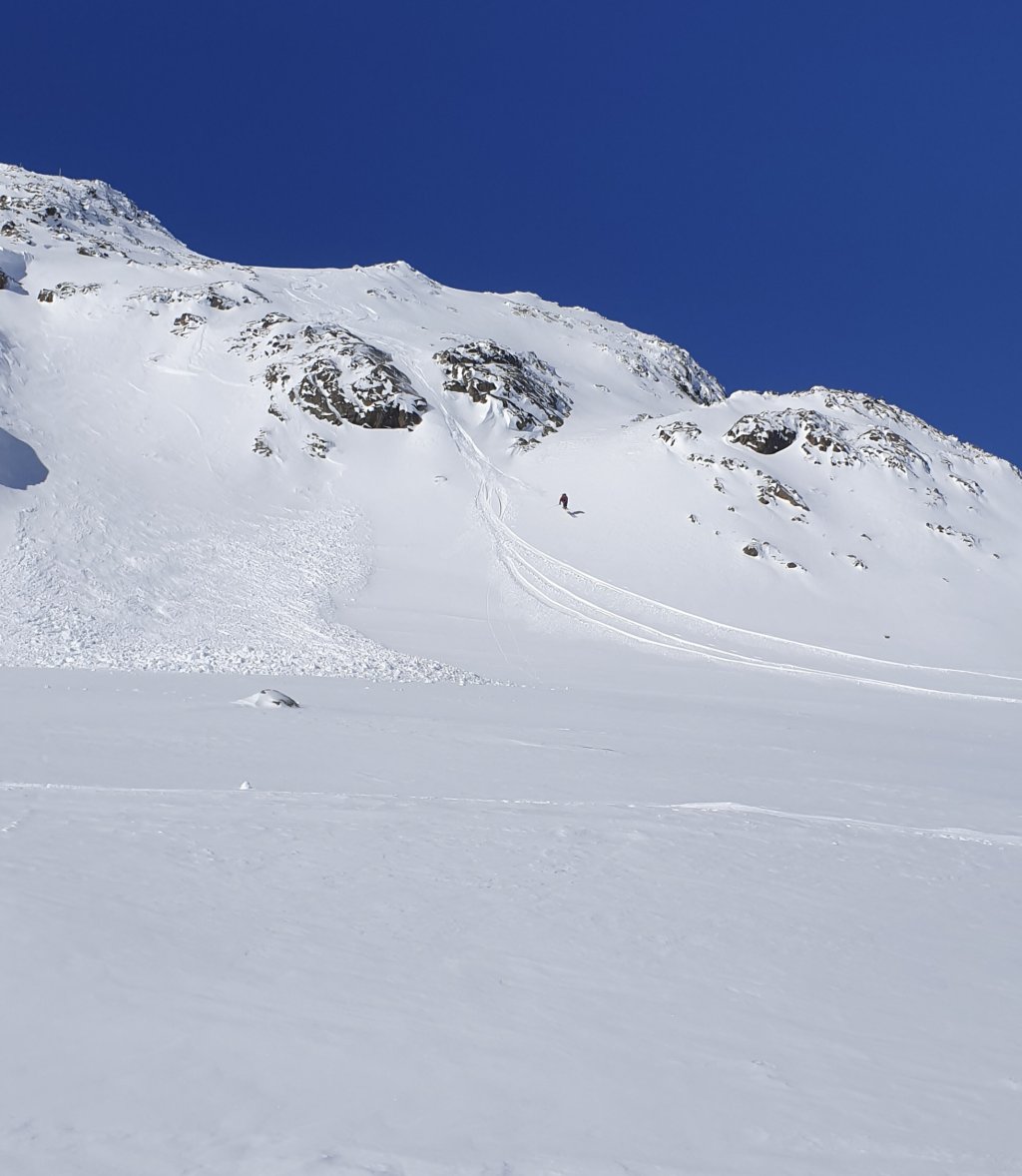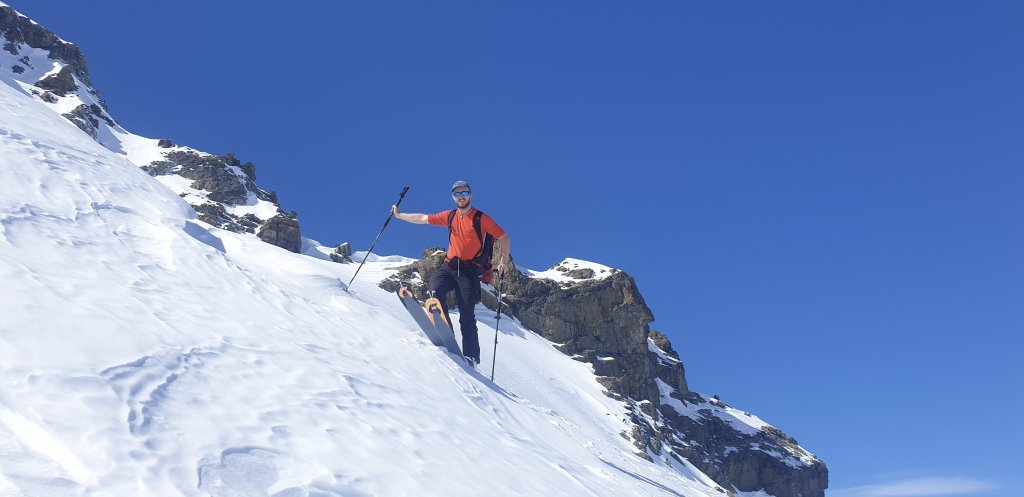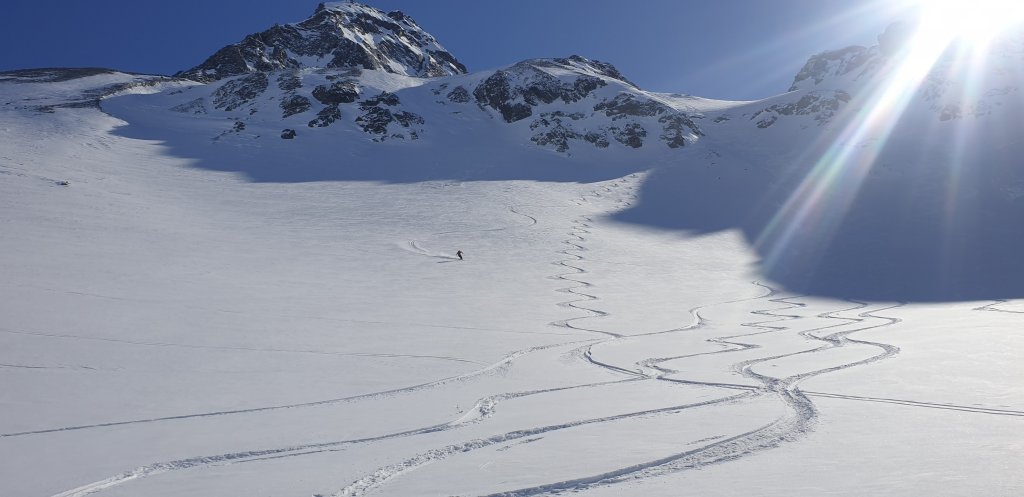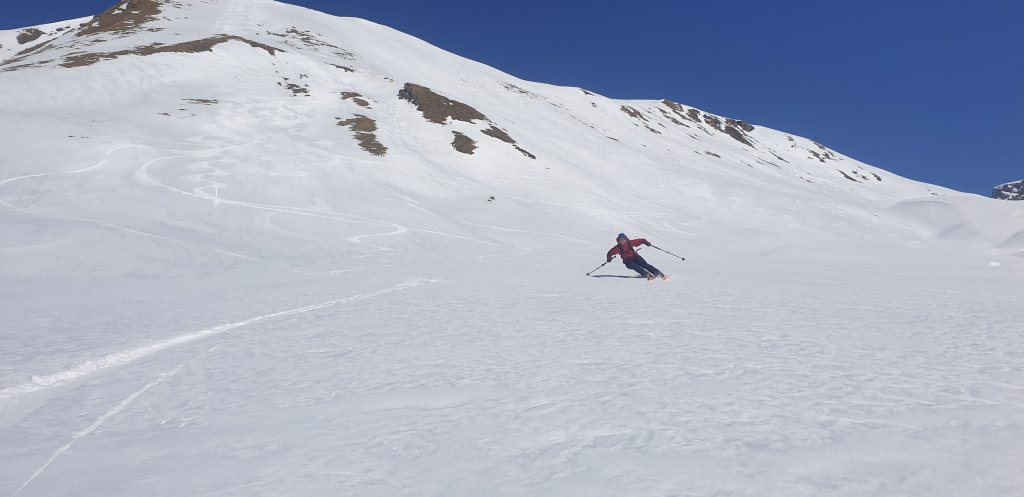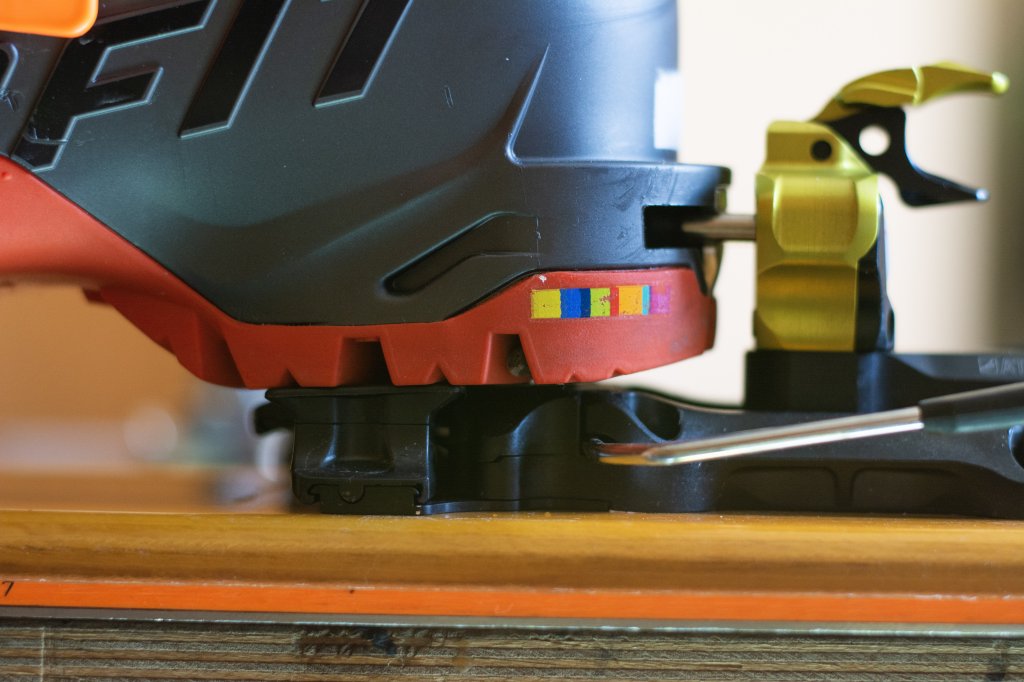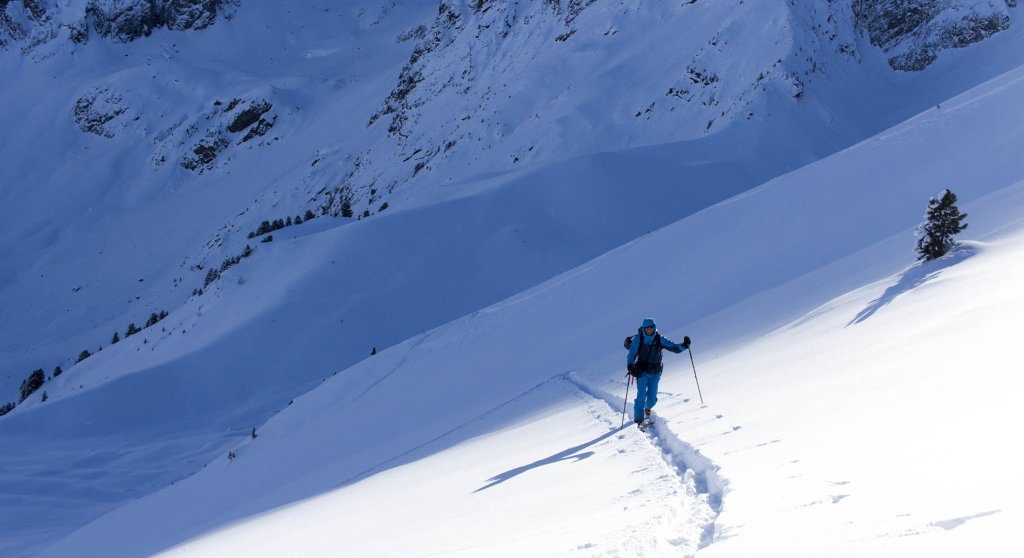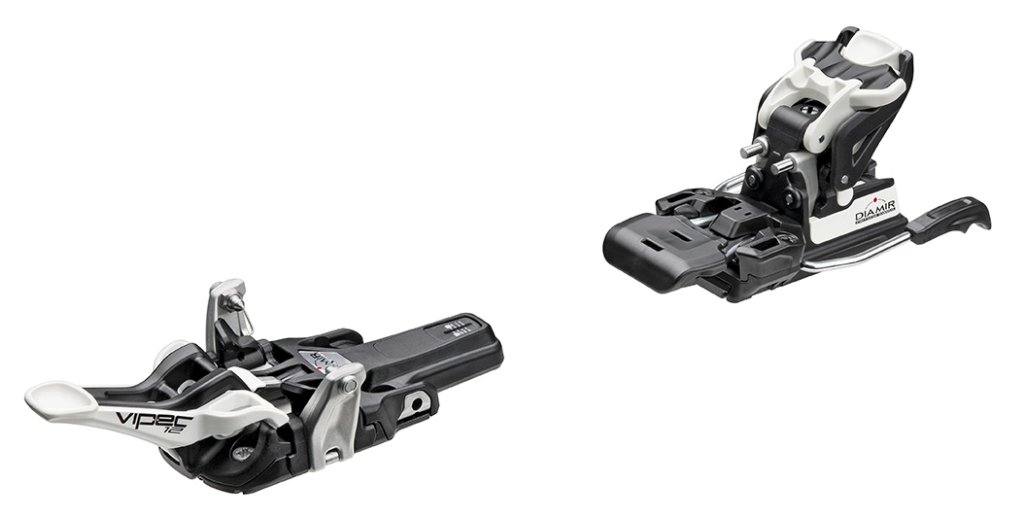First impression
When you unpack the FR 14 from the box, you are met with a few individual parts. On closer inspection, however, it quickly becomes clear what belongs where.
At first glance, the binding makes a very solid impression. Apart from a few small details, the toe piece is made of aluminium or stainless steel. The heel piece (also made of aluminium and stainless steel) sits on a plastic slide, which also makes a fairly solid impression. Only the stoppers seem a little dainty (thinner aluminium tubes, less plastic than similar products). In general, the back of the binding looks more like a binding for ski touring races at first glance. However, the Z-value scale (vertical and horizontal) of 8-14 leaves no doubt that the binding was packed in the right box. The freeride spacers (plastic) are located at the height of the stoppers, but I will come back to these later.
The drilling pattern, i.e. the distance between the screws of the binding, is quite wide, which certainly favours use on wide skis. The binding is fastened with 8 screws per ski.
The tester and the test conditions
I myself weigh about 85kg and am 185cm tall. I don't really have a favourite touring terrain in that sense any more. Depending on the conditions, it ranges from grassy hill tours with Hansi Hinterseer turns to big slopes with long radii and the occasional jump to steep gullies with jumpturns. The ascent length varies from short hikes from the mountain station to tours with a maximum of 1500 metres.
After working as a ski instructor all winter long and spending about 160-180 days a season on the slopes, I can describe my skiing skills as pretty solid.
I've also had several pin bindings from Marker and Dynafit mounted on various skis. For a few years now, I've actually only used pin bindings for touring. This is my first experience with ATK products.
The binding was tested on a Scott Speedguide 95 in 178cm with a Dynafit Hoji Free boot. I travelled exclusively in the Upper Engadine, where the conditions were extremely tough this winter, but there were also the odd powder day and a few firn descents.
Binding features in practice
Like every manufacturer, ATK also advertises its products with special features that are intended to emphasise the special capabilities of the binding. I would like to take a brief look at some of these features, explain them in more detail and explain their functionality/usefulness.
EES - Easy entry system: This system promises easy entry into the front automatic thanks to improved geometry. I haven't done much research into the geometry of front-entry bindings so far. However, getting into the binding at the front is actually child's play.
Snow Pack Proof System: The front jaw of the binding has been designed in such a way that, if the boot is in the pins, the area under the springs is completely closed (see photo) preventing snow or other things will accumulate underneath, which could impair the function of the binding. This feature definitely makes sense and also works perfectly.
UHV - Uphill hardness Variator: This allows you to adjust the hardness (3 settings) of the locking of the front pins for the ascent, which is primarily intended to reduce wear on the inserts of the boots. I have set the value to medium. The lever can be locked and released with little force. There were no false releases on the ascent. I can't say whether the whole thing really makes a big difference (Dynafit also has different locking positions for the front lever) and the wear and tear only becomes apparent after a very long period of use. In any case, the system doesn't add any weight and so I think: "Hifts ned, schods ned" [Austrian slang]
Elastic Response System: Means nothing other than that the heel can slide on the sled during the ride and compensates for the bending of the ski. This is definitely an advantage when landing jumps, compressions and anything where the ski is bent in any way, as the flex of the ski is not affected and, above all, unnecessary false releases are avoided.
Freeride Spacer: The Freeride Spacer (optional to attach during assembly, but included in the scope) ensures that a wider power transmission between boot and ski is guaranteed in the downhill position. This means that the boot lies almost across the entire width of the spacers on the ski (see photo). This noticeably improves edge hold on hard surfaces.
Magneto heel flaps with 5 climbing aid positions: With this binding, the climbing aid remains in position with the help of magnets, which has the advantage over other systems that work with springs that the springs cannot become unhooked. The climbing aid is very easy to operate with the poles. However, the 5 positions of the climbing aid are more of a marketing gag. Experienced tourers who are out and about with pin bindings normally only need the 0-position and sometimes the 1st climbing aid anyway. In addition, to be able to switch between the positions, you would have to turn the back 180 degrees each time, which in practice is only possible by bending down and turning by hand. The 3 positions (0, 1 and 2) that can be set without turning, but by folding, are already more than sufficient.
